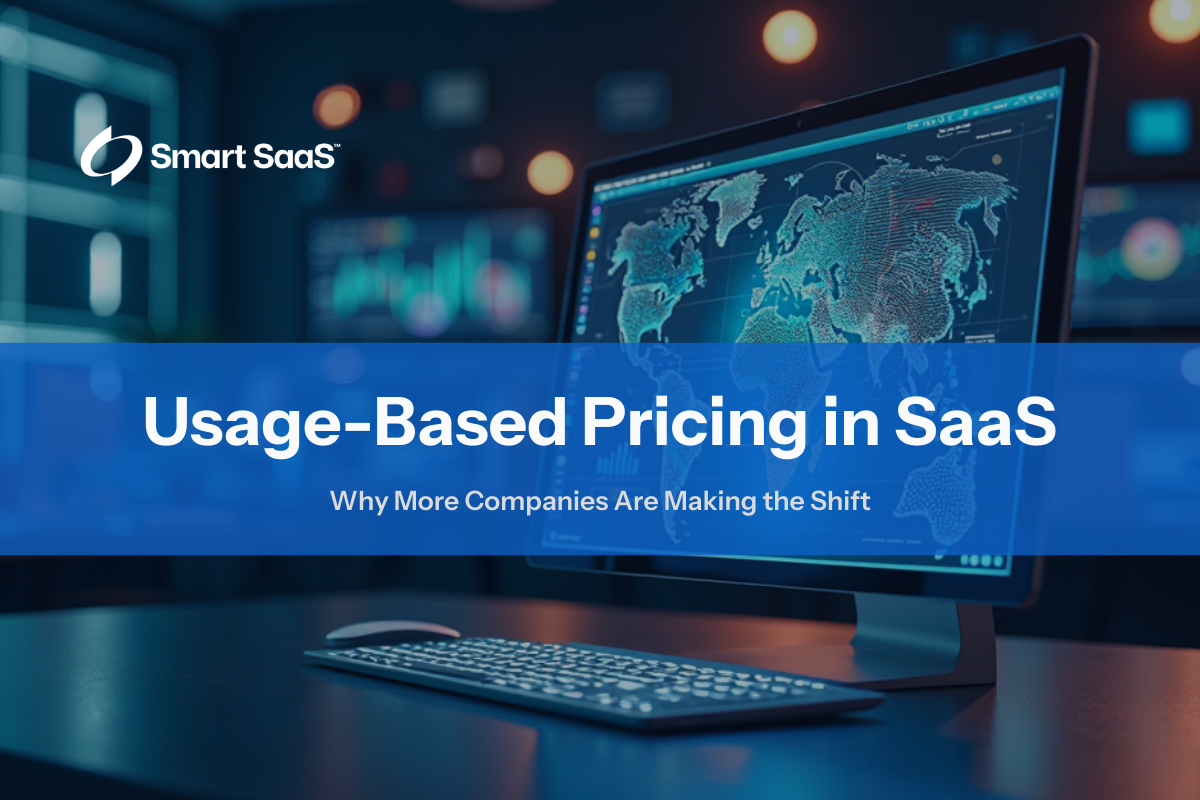

Monday, March 17, 2025
Kevin Anderson
Software as a Service (SaaS) revolutionized how we buy and maintain software—replacing hefty license fees with recurring subscriptions and continuous updates. Yet, while many providers initially adopted seat-based or tiered pricing, the industry is seeing a notable surge in usage-based pricing SaaS models.
Under this approach—often called consumption-based pricing, metered pricing, or pay-as-you-go SaaS—customers pay according to what they actually use, whether that’s data consumed, API calls made, or another usage metric.
What’s driving this shift toward usage-based billing, and how can you decide if this structure works for your product? In this in-depth guide, we’ll unpack why SaaS usage-based pricing is growing faster, the benefits it offers both vendors and clients, and how to implement a successful usage-based framework.

The SaaS subscription model was originally billed as a major leap forward—lowering upfront costs, increasing accessibility, and promising frictionless updates. Over time, however, seat-based or tiered plans left certain pain points unresolved. Sometimes large customers felt forced to pay for seats they only partially use, while small or seasonal businesses found it challenging to budget for a solution with static monthly fees. Usage-based pricing emerges as a more flexible alternative: instead of paying for user seats or predetermined feature bundles, customers spend in proportion to resource consumption.
Why more SaaS companies are shifting to usage-based pricing? Multiple factors drive this trend. For one, digital tools and data analytics have improved, making it simpler for vendors to measure resource usage in real time. Additionally, organizations increasingly crave cost models that align with real business outcomes; paying only for what they use feels fairer and more transparent. This shift is also a reflection of how the market has evolved—software is no longer just about features but about integrating into daily workflows as seamlessly as possible, with billing flexibility to match. For further context, you can explore Digital Transformation and Getting Started with Digital Transformation.
Moreover, the ability to track usage in real time has transformed pricing strategies. Vendors now have the tools to adjust pricing based on actual consumption data, which improves revenue forecasting and resource allocation. This transparency not only enhances customer trust but also promotes a culture of efficiency and innovation. As usage-based pricing becomes more prevalent, companies can better tailor their offerings to meet the dynamic needs of their customers.
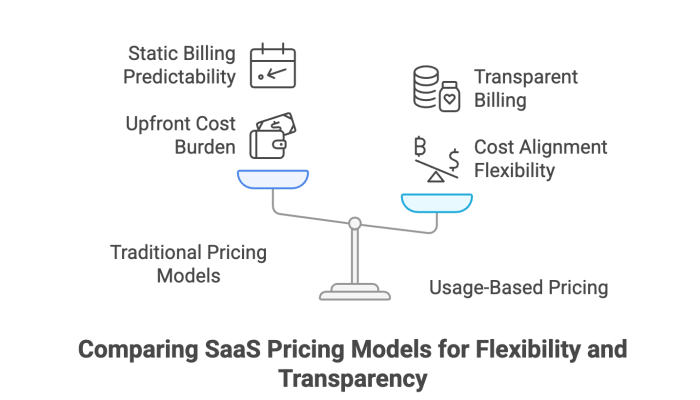

In traditional subscription plans, you might charge users a flat monthly fee, possibly with different tiers, regardless of actual usage. Usage-based pricing—also referred to as transactional pricing, resource-based pricing, or performance-based pricing—pegs costs to the extent of consumption. For instance, you might bill clients for each gigabyte of storage, every API call, or each transaction processed.
This concept resonates with metered pricing in utilities like electricity or water: you pay for exactly what you consume, with no penalty or leftover capacity. In SaaS contexts, typical usage metrics can include data volume, compute time, user actions, or even event-based triggers (like sending marketing emails or scanning documents). For further reading on pricing models, see SaaS Billing Strategies.
Expanding on this, usage-based pricing allows for a more granular approach to cost management. Customers can monitor their consumption in real time and adjust their behavior to optimize costs. At the same time, vendors benefit from detailed analytics that provide insights into user behavior and system performance, enabling continuous improvement of both the product and the pricing strategy. This approach ensures that pricing remains fair and proportional, reflecting the true value delivered.
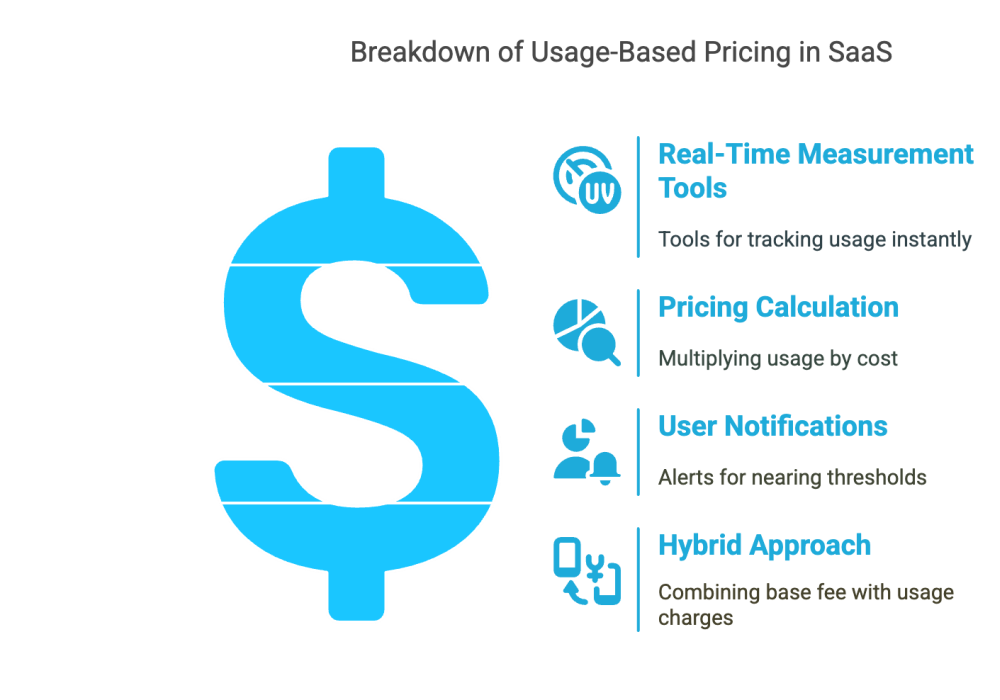

When a SaaS company opts for usage-based billing, they usually implement tools that measure resource usage in near real time. The system then multiplies usage units (e.g., gigabytes, sessions) by a predetermined cost. Users often receive usage dashboards and notifications if they’re nearing certain thresholds, preventing monthly invoices from blindsiding them.
Vendors sometimes combine usage-based metrics with base subscription fees—creating a hybrid approach. For example, a customer might pay a modest monthly cost to access the platform’s core features, plus additional charges for each unit of usage above a free or included allotment. This ensures a baseline revenue for the vendor while still offering consumption-based flexibility.
In practice, this method requires a robust metering infrastructure. Modern SaaS platforms deploy real-time analytics to continuously capture usage data, which is then integrated with billing systems to produce accurate invoices. Customers appreciate this level of transparency because it empowers them to control costs and adjust their usage patterns to avoid surprises. Detailed usage reports and dashboards further enable users to optimize their consumption, ultimately fostering a collaborative relationship between the vendor and its customers.

By tying cost directly to usage, you intrinsically align the platform’s price with the benefit customers derive. Instead of paying for seats they barely use, or tiered plans that might overshoot actual needs, organizations see a more direct correlation between how much they spend and how often they rely on the service. This fosters a sense of trust and perceived fairness, often spurring deeper adoption.
Imagine you’re a startup evaluating a data analytics platform. A seat-based plan might demand a minimum of 10 seats at $80 each, imposing a monthly cost of $800, even if your real usage is sporadic. Conversely, a usage-based plan might let you pay for a certain volume of API calls or data scanning that only ends up costing $100 per month at the start, increasing gradually as your usage intensifies. This lower initial burden fosters quicker adoption, enabling product-led growth (PLG) that helps vendors attract a wide base of small users, some of whom become large customers over time.
Usage-based billing demonstrates genuine consideration of customer budgets. The vendor’s revenue scales in tandem with the client’s success or heavier usage. This synergy can reduce churn, as users only pay more when they’re extracting more value. Over time, this leads to a stable, if not expanding, revenue stream, aligning with many revenue-based pricing goals. As a result, the brand experiences positive word-of-mouth and higher overall satisfaction.
Frequent usage fosters more embedded workflows, which typically translates to higher retention. With usage-based structures, clients naturally explore ways to incorporate the software more fully into their processes—knowing their costs scale proportionately. This can create a virtuous cycle: heavier usage means more perceived value, leading to recurring or increasing revenues for the vendor and a deeper sense of ROI for the buyer.
Additionally, this model encourages continuous product improvement. As vendors receive detailed usage data, they can identify which features drive the most value and focus their development efforts accordingly. This iterative cycle not only improves the product but also reinforces customer satisfaction, as clients see the software evolving in line with their needs. For further insights on growth strategies, review The SaaS Business Model.
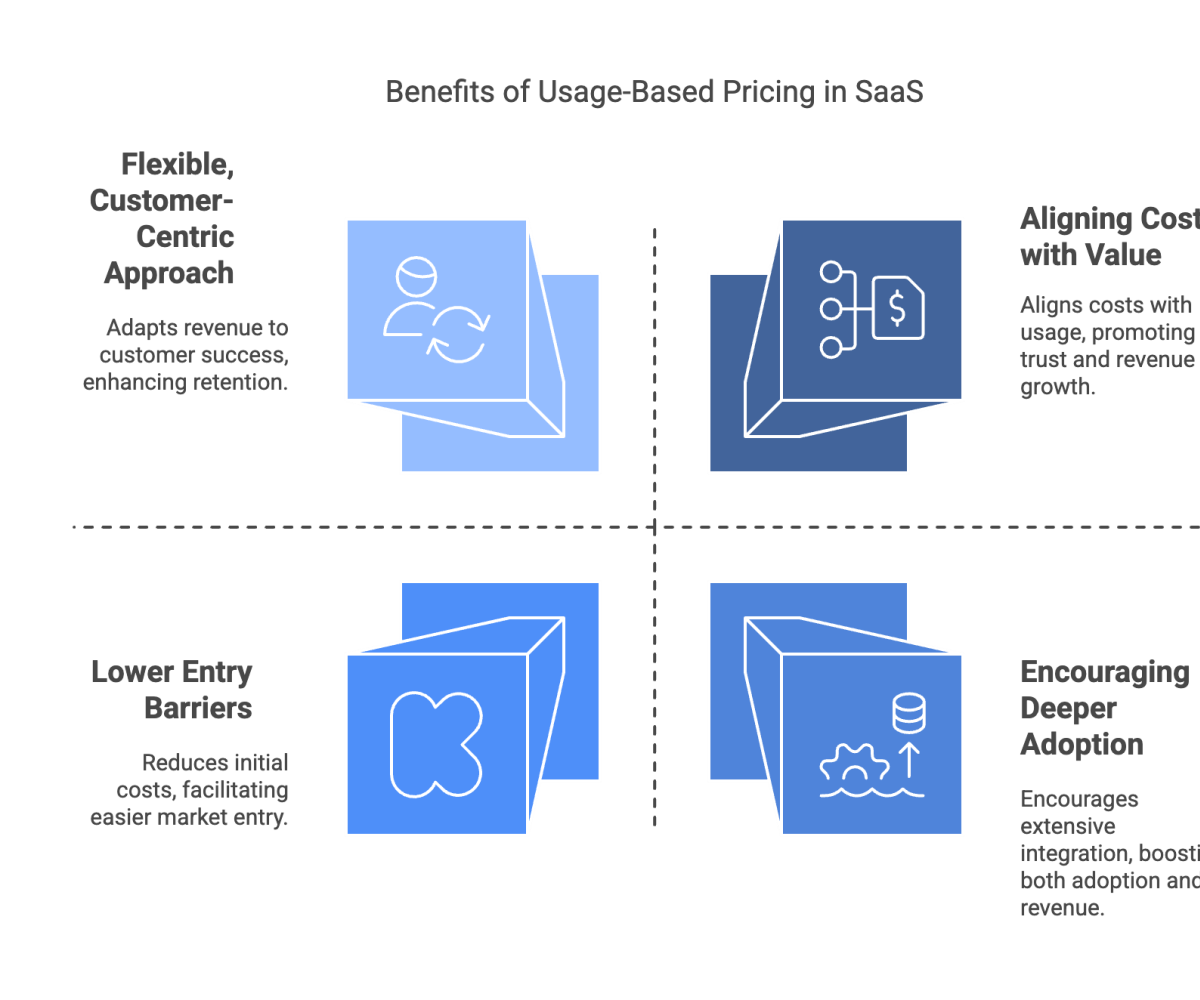

By paying strictly for the resources they consume, customers view costs as equitable. This reduces pushback about locked features or forced upgrades. In turn, vendors foster trust, limiting tension over expansions.
Potential buyers can dip their toes in at minimal cost. If they love the service and scale usage, revenue from that account naturally grows without big negotiations or plan migrations. This flow suits smaller clients testing the waters or large enterprises that want a pilot before broader rollout.
Vendors can define multiple usage metrics or layer them—for instance, a base monthly fee plus variable charges once usage crosses a threshold. This approach can also open doors for API monetization if your software is heavily accessed via programmatic calls.
Tracking usage data gives vendors a clearer snapshot of how customers interact with their product. If usage unexpectedly spikes or lulls, it might signal success or churn risk. You can then adjust your billing flexibility or resource allocation accordingly, or proactively guide customers on optimizing usage to get more from the platform.
In addition, the insights derived from usage data enable continuous improvement. Vendors can analyze trends to identify opportunities for upselling, feature enhancements, or even cost reductions. This creates a feedback loop where both the vendor and customer benefit from improved efficiency and value realization.
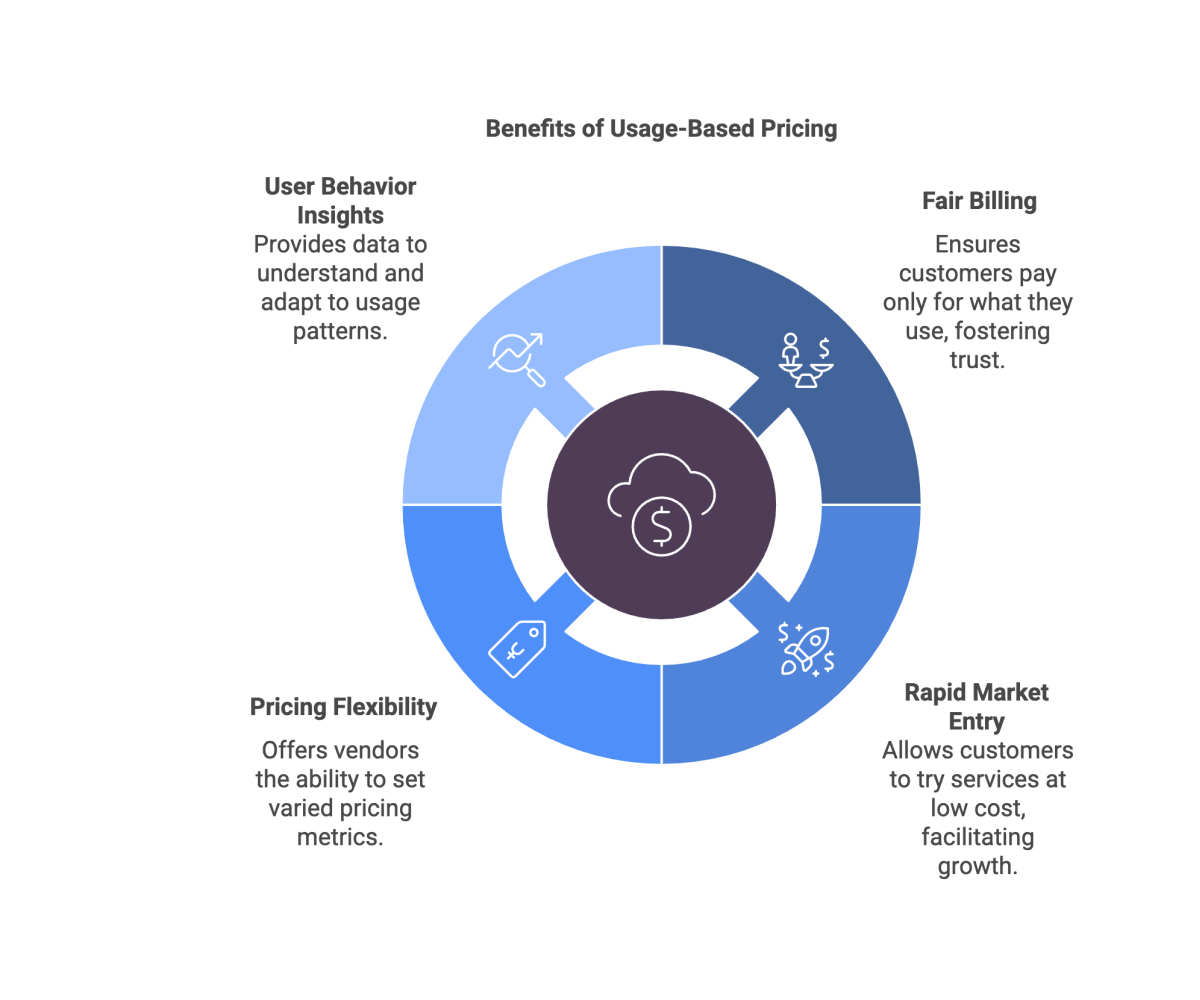

Not all resource consumption is created equal. If you measure data volume but your real cost driver is compute time, you’ll end up with skewed bills. Similarly, if you track transactions but user ROI stems from advanced analytics, a transaction metric might misalign with the perceived value. Evaluate your platform’s core outcomes carefully.
While usage-based billing aligns cost with consumption, it can also create unpredictability—sometimes known as “bill shock.” Large monthly surges might unsettle customers used to stable expenses. Providing usage dashboards, threshold alerts, or monthly usage caps can ease that anxiety.
Metering usage precisely can demand robust infrastructure and thorough testing. You must capture data in real time, store it securely, and present it transparently to users. If your usage definitions are vague—like “standard CPU usage”—you risk confusion and disputes. Clarity is crucial.
Some vendors adopt a hybrid of seat-based or tiered plans, plus usage-based charges for advanced or high-volume features. This approach can yield a stable baseline of recurring revenue while letting clients scale cost only when they cross usage milestones. Although more flexible, it may also complicate invoices or user understanding if not communicated cleanly.
Beyond these individual considerations, it is important to adopt a holistic view that balances innovation with customer comfort. Ensuring transparency through detailed reporting and clear communication about billing can mitigate many of these challenges. In turn, this strategy not only maintains customer satisfaction but also strengthens long-term business relationships.
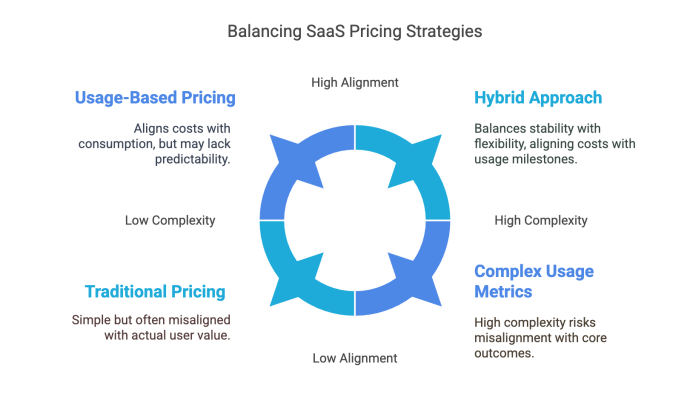

How does SaaS pricing work with usage‑based models in practice? Below is a framework to guide your rollout.
Pick a single, easy-to-measure metric—like API calls or gigabytes of data. Ensure it directly impacts your cost structure or user value. Overloading with multiple metrics might confuse customers, so start simple.
Explain to prospective users why paying by usage benefits them. Emphasize cost savings for smaller or seasonal usage, scaling cost only when usage yields more business value. Provide examples or a simple usage calculator so they can project monthly or annual expenses.
Offer a free usage allowance or minimal monthly retainer, then define your per-unit rate past that point. Publish rate cards on your pricing page and send automated alerts at 75% or 100% of monthly allocations to minimize “bill shock.” This fosters trust and allows customers to modify usage or prepare for higher fees.
Accurate usage-based billing requires precise data capture. Log events like calls, transactions, or resource loads. Ensure your system can handle peak events without losing track of consumption. Provide usage data in a dashboard so customers always know how close they are to upper limits.
Begin with a small group or new signups, gather feedback, and refine. Are they hitting usage caps too soon? Are certain features overused or underused? Tweak the per-unit cost or the free usage threshold based on real-world patterns. Success depends on bridging your internal cost structure with how clients perceive value.
Even the best usage-based plan won’t succeed if customers feel abandoned once they exceed normal usage. Offer proactive help—such as advising, "We see a usage spike; here’s how to optimize your settings." This not only prevents churn but can encourage continued and expanded use as customers witness consistent ROI.
Additionally, a pilot phase is crucial for fine-tuning your approach. By gathering data from early adopters and iterating on the pricing thresholds and support structures, you can build a model that accurately reflects both the cost structure and customer expectations. Transparent communication during this phase fosters trust and ensures a smooth transition as the model scales.
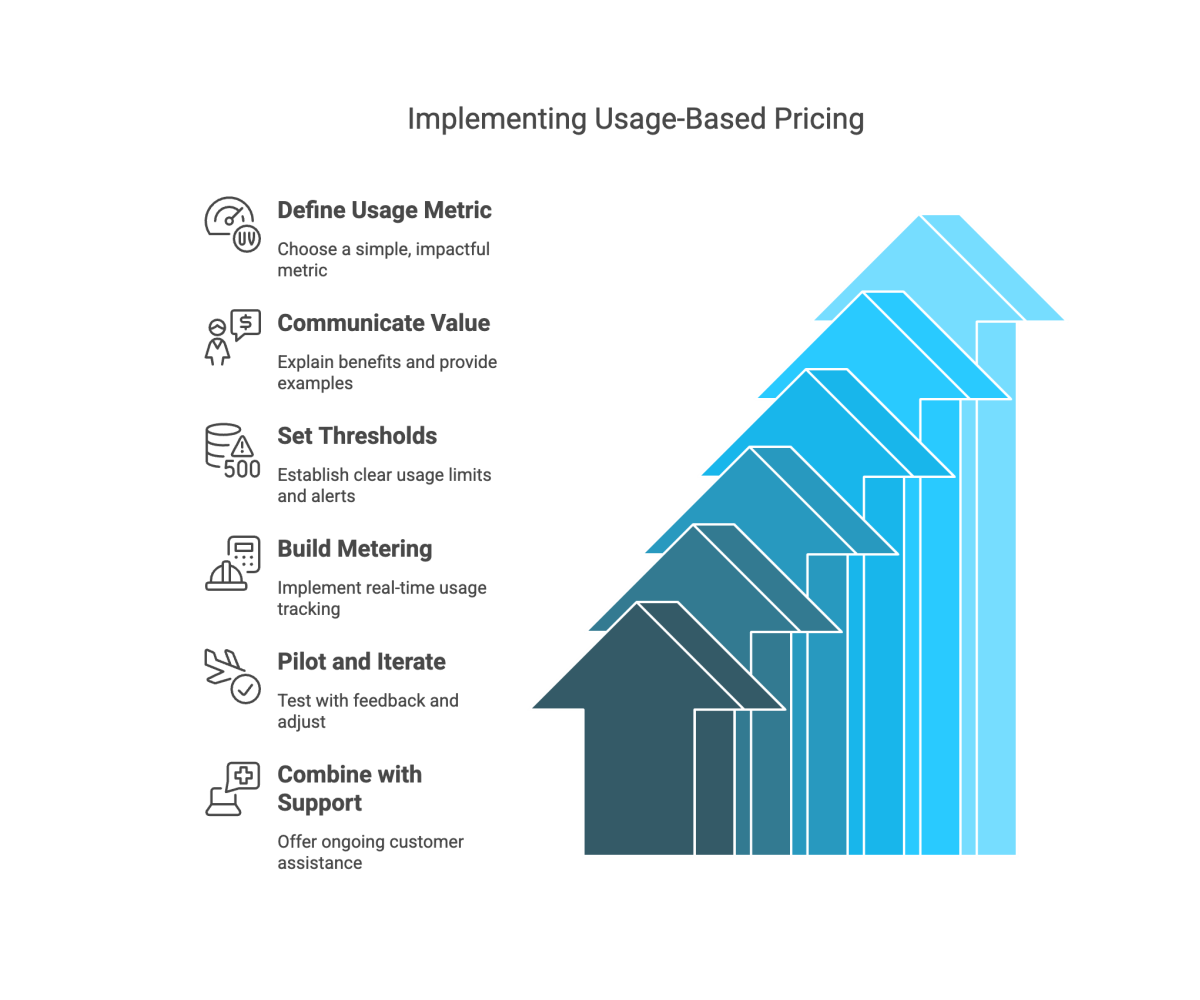

Usage-based pricing SaaS models represent a growing trend in subscription-based software, offering the promise of fair, flexible, and scalable billing structures. As the industry evolves, many vendors discover that aligning costs with consumption fosters higher trust and deeper user engagement. When customers only pay for the resources they truly use, they perceive greater value—and are often more willing to expand usage as their organization grows.
Why more SaaS companies are shifting to usage-based pricing? The answers revolve around simpler onboarding, transparent cost alignments, and an easier upgrade path. It’s especially appealing for data-heavy or API-driven solutions, where user consumption directly correlates with ROI. Why do SaaS companies with usage-based pricing grow faster? Because they lower the barrier for initial adoption and encourage expansions without forcing huge leaps in monthly fees.
Still, usage-based billing isn’t universally perfect. Some SaaS products lack a clear consumption metric, or customers may worry about monthly cost fluctuations. The solution often lies in a hybrid approach or implementing alerts and a well-designed usage dashboard. Ultimately, you’ll need to assess whether your platform’s core value matches an on-demand model, then invest in infrastructure that ensures accurate tracking and transparent billing. If done right, usage-based pricing can produce a frictionless, pay-as-you-grow experience that cements your place as a fair, customer-centric SaaS partner.
You can also explore related articles such as Vertical SaaS Innovation and SaaS Platforms Key Features for additional insights.